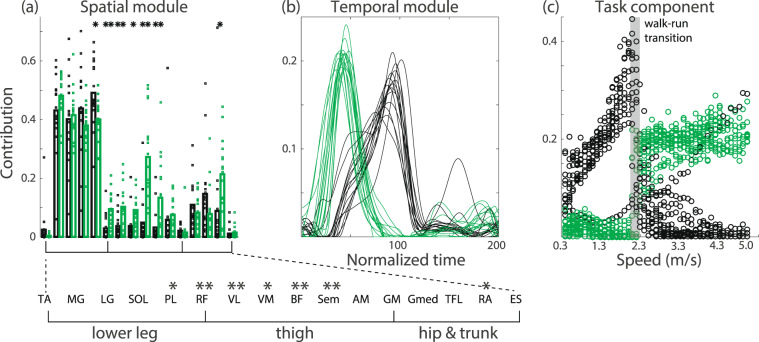Figure 6.
Further analysis of the tensors whose task-dependent modulations show discontinuous changes between walking and running. CP decomposition with non-negativity constraints was applied to the EMG data for each subject. We chose R to be the minimum number of modules and components that explained more than 80% of the variance in the original data. Then, we identified the tensors whose task-dependent modulations show the most and second-most substantial discontinuous changes between walking and running. The tensor that shows more significant task-dependent modulation for walking than for running is presented in black, and the tensor that shows more substantial task-dependent modulation for running than for walking is presented in green. (a) Spatial modules for each subject. Each dot indicates the recruitment pattern for one spatial module and one subject. Each bar shows the average value of the recruitment pattern across all subjects. Single asterisks and double asterisks associated with certain muscles indicate significant differences in the recruitment patterns between the two tensors, with p < 0.05 and p < 0.01, respectively. The abbreviations of the muscle names are summarized in Table 2. (b) Temporal modules for each subject. (c) Task-dependent modulations for each subject.

